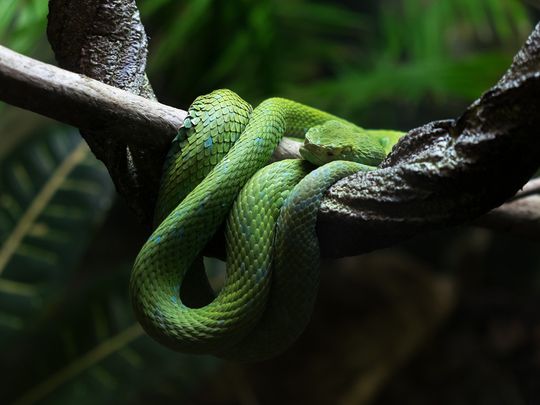
The human body is amazing – even when you think you know everything about it, it does or reveals something surprising. But animal bodies? They’re even more fascinating.
Click start to play today’s Crossword, where we join in with a ‘sound of excitement’ (clue for 5-Across) at discovering the many ways in which animals astonish us.
With roughly 8.7 million species of animal species on Earth – of which, nearly 1.2 million species are insects – each one is different from the next. Unlike humans, who have the basic organs for breathing, pumping blood, digesting food and so on, some animals have organs that are incredibly unique.
Here are a few to note:
1. Photophores
What if you could glow? Photophores are light-producing organs that give fish the ability to become bioluminescent. The smalltooth dragonfish, for instance, has three ‘flashlights’ under its eyes – red, orange and blue. Like the lights on our cars, when a smalltooth dragonfish swims along, it gives off a blue light – something like a high beam. It uses its red light like a sniper scope, to see unsuspecting prey or carry out a private conversation during courtship, according to a January 2017 report in the National Geographic. What’s the orange light for? Scientists are still unsure. But no doubt, it’s likely to be something equally extraordinary!
2. Venom glands, heat sensors
You’ll find pit vipers in most parts of the Americas and Eurasia. These snakes feature venom glands and a heat-sensing pit between their nostril and eye. This sensor is able to detect infrared radiation, so even if it’s pitch dark, the pit viper can spot its prey from as close as two feet away.
3. Mental glands
Male lungless salamanders have glands that deliver pheromones to the female, located in their chin – that’s where the name comes from. In Latin, mentum means ‘chin’, so mental glands have nothing to do with the mind. While courting, the male salamander engages in a choreographed dance, which involves delivering pheromones to the female by slapping his mental gland across her nostrils. The pheromones help make the female more receptive to his advances, thereby increasing his chances of mating.
What do you think of these unique animal organs? Play today’s Crossword and tell us at games@gulfnews.com.



